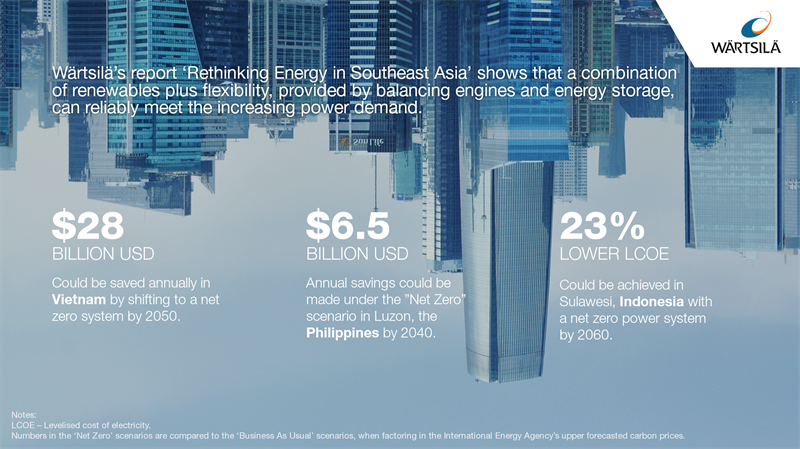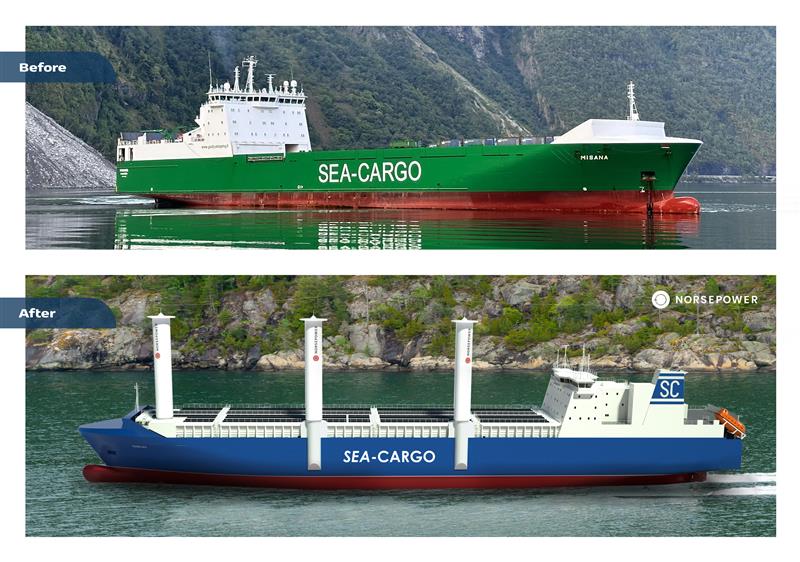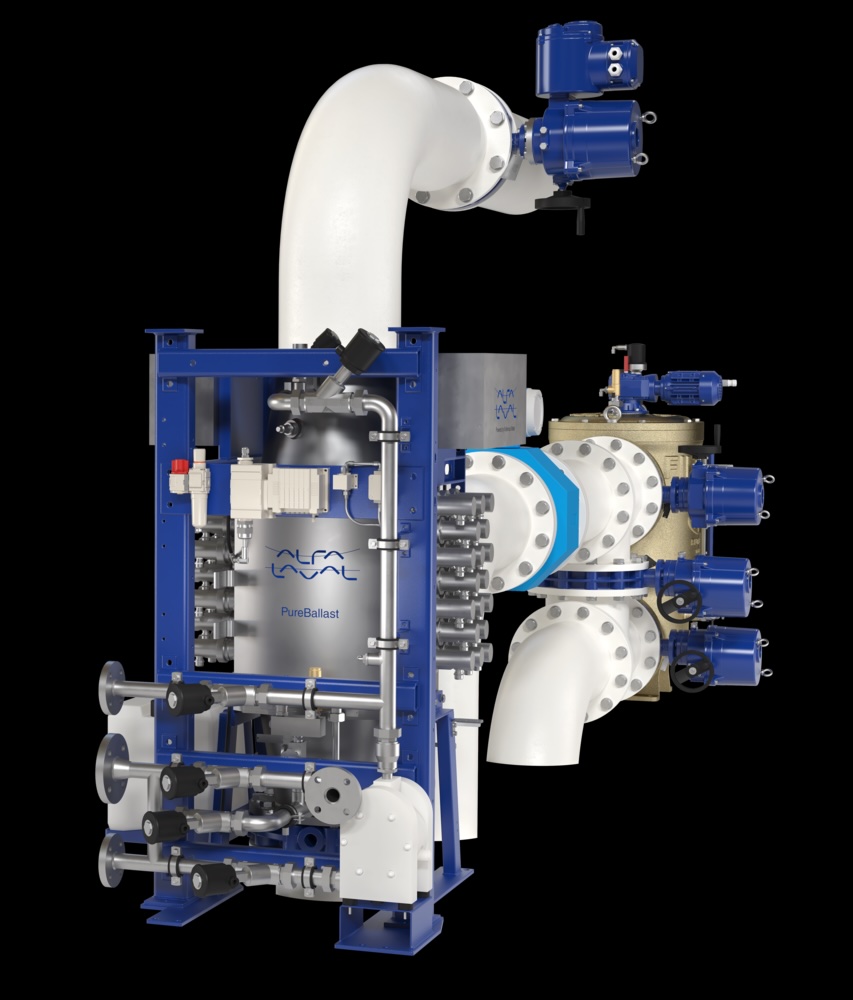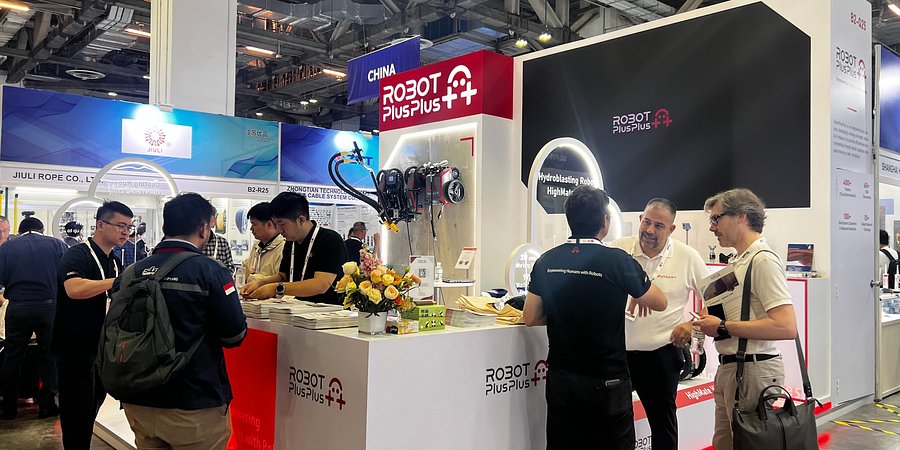Power system modelling by the global technology group Wärtsilä has revealed that renewable-based power systems, backed by grid balancing engines and energy storage, can enable Southeast Asian countries to reach net zero by mid-century whilst cutting the levelised cost of electricity (LCOE) by over 20%, when taking into account likely future carbon taxes.
The modelling, published in
Rethinking Energy in Southeast Asia report, simulates the paths to net zero emissions in three major Southeast Asian power systems: Vietnam; the island of Sulawesi in Indonesia; and the island of Luzon in the Philippines.
The study shows that a combination of renewables plus flexibility, provided by balancing engines and energy storage, can reliably meet the increasing power demand. In all the countries modelled, the ‘Net Zero’ scenario shows that inflexible fossil fuel assets, such as coal or combined cycle gas turbines (CCGTs), should be phased out. New investments should focus on adding renewable energy sources, increasing flexible capacity, and developing sustainable fuels such as green hydrogen.
Key findings:
Wärtsilä's modelling shows how the lowest cost existing energy technologies can be deployed to meet future power demand. The modelling is based on varying levels of emissions, including scenarios simulating 50% and 80% emission reductions, as well as net zero emissions. The modelling also showed a ‘Business As Usual’ (BAU) scenario which did not restrict emissions. Critically, when factoring in the International Energy Agency's (IEA) upper forecasted carbon prices, the studies show that the LCOE in these net zero power systems is at least 20% lower than the BAU scenarios:
·Vietnam's net zero power system costs 20% less by 2050 than BAU. This would avoid nearly 28 billion USD per year in forecasted carbon taxes.
·A net zero system in Luzon, the Philippines costs 23% less by 2040 than BAU. This would avoid over 6 billion USD per year in forecasted carbon taxes.
·A net zero system in Sulawesi, Indonesia costs 23% less by 2060 than BAU. This would avoid over 1 billion USD per year in forecasted carbon taxes.
“Southeast Asia is experiencing unprecedented fuel price increases and volatility, increasing year-on-year demand for power, plus massive exposure to intensifying climate-induced extreme weather. Amidst this uncertainty, results of our study clearly show: by creating renewable and scalable power systems the region can sustain future growth, jobs, and prosper in this new normal of fossil fuel volatility and emission constraints,” said Sushil Purohit, President of Wärtsilä Energy and Executive Vice President, Wärtsilä Corporation.
To achieve the major benefits of net zero power systems, policymakers and regulators need to incentivise the addition of more flexible capacity in Southeast Asia. Based on findings from power system modelling and local expertise from operating in these regions, Wärtsilä recommends the following considerations for capacity planning and policy development:
·Recognise that inflexibility comes at a cost, for example in the form of higher fuel consumption or the need to curtail renewables (which cannot be fully utilised by inflexible power systems).
·Encourage and plan for more flexible capacity through power system planning, regulations, tenders, and revenue mechanisms to ensure the financial viability of flexible assets.
·Establish well-functioning ancillary services and balancing markets to support grid stability and renewable integration.
Source: Wärtsilä
The opinions expressed herein are the author's and not necessarily those of The Xinde Marine News.
Please Contact Us at:
media@xindemarine.com


 Sea-Cargo and Norsepower continue their collaborati
Sea-Cargo and Norsepower continue their collaborati  Alfa Laval expands its portfolio with ultrasonic an
Alfa Laval expands its portfolio with ultrasonic an  Alfa Laval PureBallast 3 Ultra secures orders from
Alfa Laval PureBallast 3 Ultra secures orders from  RobotPlusPlus Wows Maritime Professionals with Carg
RobotPlusPlus Wows Maritime Professionals with Carg  Alfa Laval secures first contract for ammonia fuel
Alfa Laval secures first contract for ammonia fuel  GNV Tests RINA’s Machine Learning and Predictive
GNV Tests RINA’s Machine Learning and Predictive